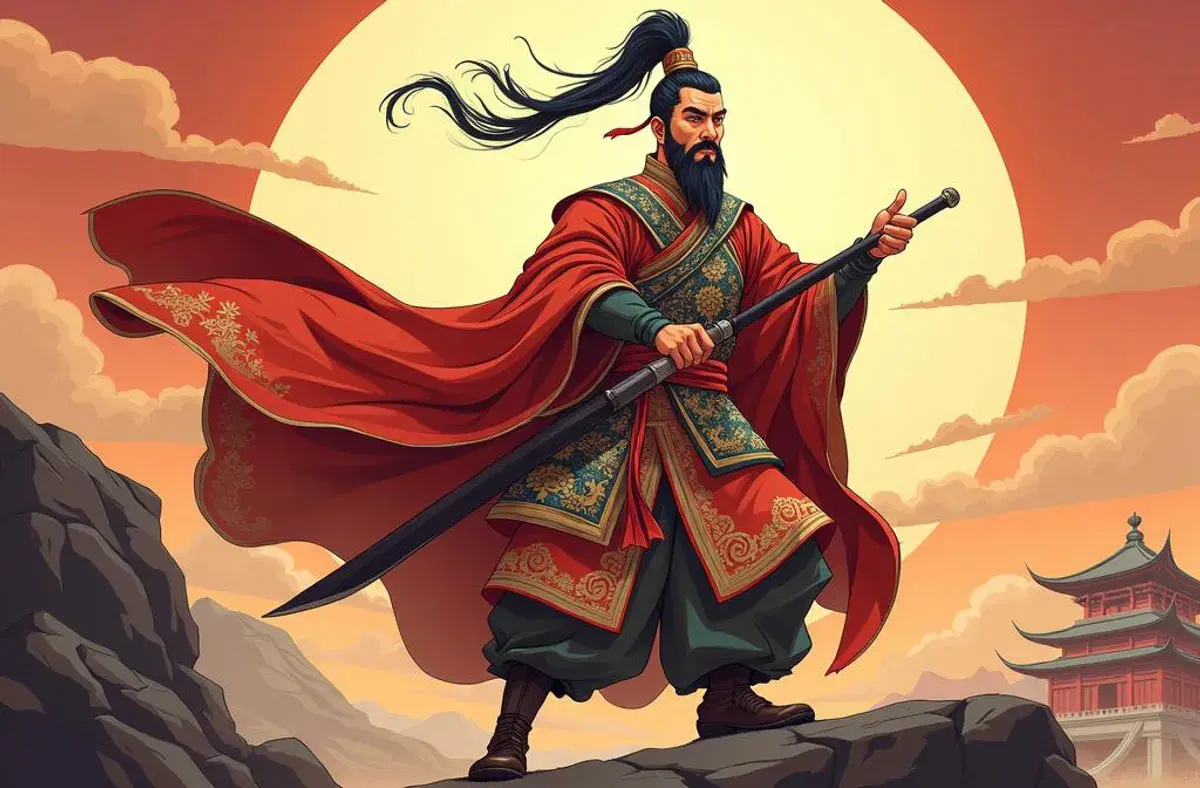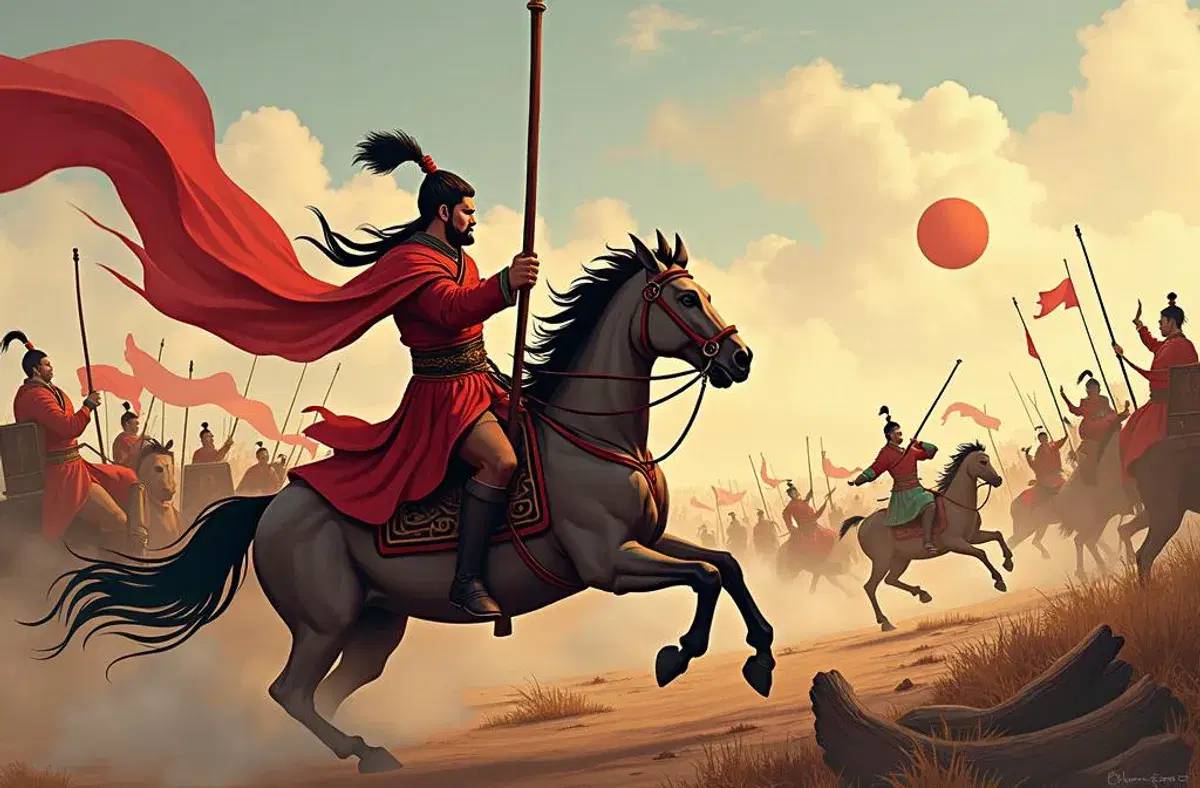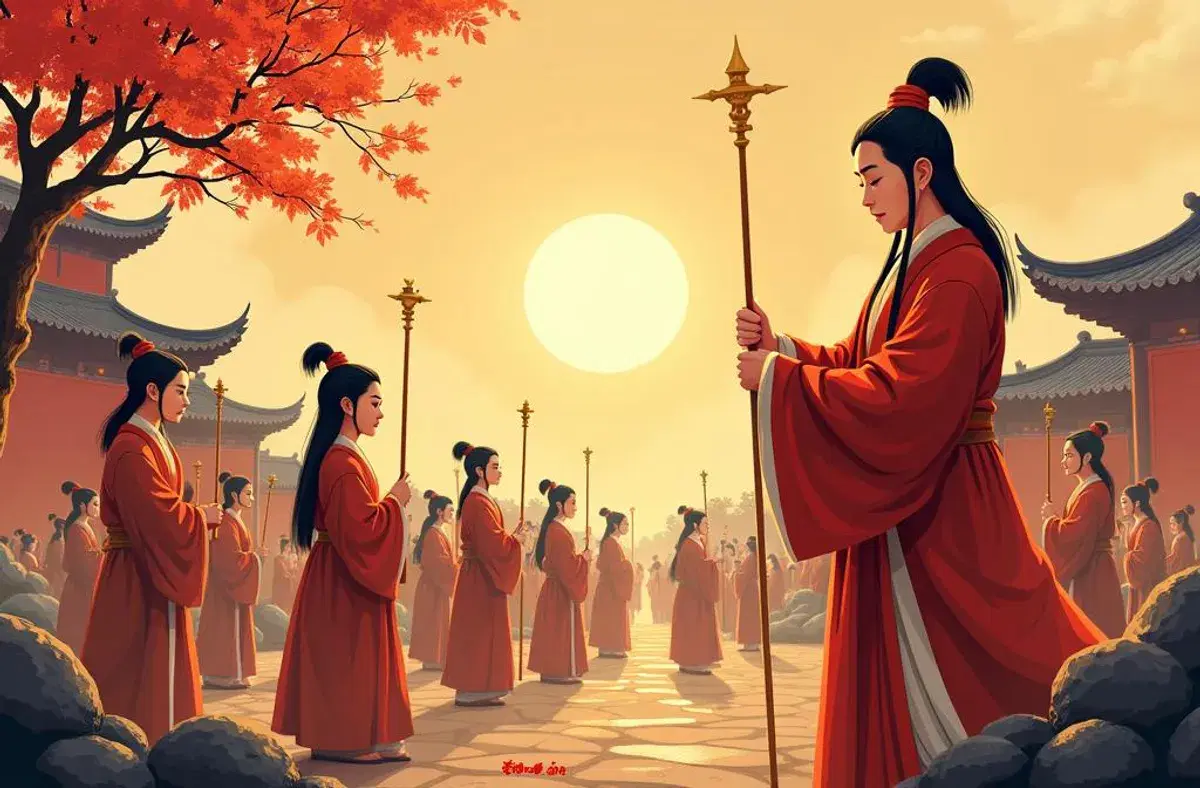Han Dynasty: Golden Age of Chinese Culture and Power
The Han dynasty (202 BCE – 220 CE) is one of the most important periods in Chinese history. It was a time of unity, new ideas, and cultural growth that shaped China’s future. Founded by Liu Bang, a man from a simple background, the Han dynasty lasted over 400 years and helped define Chinese identity and government.

Han dynasty
Liu Bang: From Farmer to Emperor
Liu Bang, later called Emperor Gaozu, rose to power during a chaotic time after the fall of the Qin dynasty. Unlike his rival Xiang Yu, who was arrogant and cruel, Liu Bang was kind and generous, which earned him the loyalty of many. This helped him become emperor in 202 BCE, starting a new era.
As emperor, Gaozu faced two big challenges: protecting the empire from the northern Xiongnu tribes and rebuilding the country after years of war. The Xiongnu were skilled fighters on horseback and a major threat. After losing to them in 201 BCE, Gaozu chose peace over more fighting. He made a treaty with the Xiongnu that involved sending them food, silk, and even royal marriages to maintain peace for many years.
At home, Gaozu worked to ease the suffering caused by the Qin dynasty’s harsh policies. He lowered taxes and ran the government more simply to help the economy recover. To keep order, he kept part of the Qin’s centralized government while also allowing some local leaders to rule parts of the empire. This balance helped bring stability.
Emperor Wu and the Golden Age
One of the greatest rulers of the Han dynasty was Emperor Wu, or Han Wudi. He became emperor in 141 BCE at just 16 years old and ruled until 87 BCE. His time as emperor was marked by expanding the empire, improving the government, and advancing culture.
Unlike earlier emperors, Wudi did not try to make peace with the Xiongnu. Instead, he led military campaigns that expanded the empire’s borders into areas like modern-day Mongolia and Xinjiang. At home, he made big changes to limit the power of wealthy merchants and landowners. He taxed merchants heavily, stopped them from owning land, and took control of industries like salt and iron. He also set up a system to keep grain prices stable, ensuring people could afford food.
One of Wudi’s most lasting achievements was opening the Silk Road. This trade route, made possible by the explorer Zhang Qian, connected China with Central Asia and beyond. While Zhang Qian didn’t succeed in forming alliances against the Xiongnu, his travels revealed great opportunities for trade. The Silk Road brought luxury goods, ideas, and Buddhism to China, making the empire richer in many ways.

Emperor Wu and the Golden Age
Confucianism Becomes the Guiding Philosophy
During Emperor Wu’s rule, Confucianism became the official philosophy of the state. Before this, Gaozu had banned the harsh Legalist ideas of the Qin dynasty but didn’t choose a specific philosophy. Confucian scholar Dong Zhongshu helped make Confucianism the foundation of the government, emphasizing harmony, moral leadership, and respect for hierarchy.
Confucianism also shaped education. By the mid-2nd century CE, the imperial university had over 30,000 students learning Confucian ideas. This focus on education and moral values influenced not just China but also nearby countries like Korea, Vietnam, and Japan.
Literature and Historical Achievements
The Han dynasty made huge contributions to writing and history. Works like Records of the Grand Historian by Sima Qian and the Book of Han by the Ban family are still admired today. These books provide detailed accounts of the Han era, blending facts with storytelling. The invention of paper during the Eastern Han period also made it easier to record and share knowledge, leading to more cultural and intellectual growth.
Daily Life in Han China
The Han empire had a large and diverse population. In 1 CE, its population was about 56 million, making it one of the largest in the ancient world. Most people were farmers who lived with their immediate families. The government supported farming with irrigation projects and better tools. While men worked the fields, women were essential in making silk, a key part of the economy.
Even during good times, not everyone prospered. Wealthy landowners often grew richer, while small farmers struggled to pay taxes and debts. These inequalities sometimes led to uprisings that weakened the empire.

Daily Life in Han China
Women and Power in the Han Dynasty
Although women were usually excluded from government jobs and formal education, some held great influence. Empress dowagers and consorts often acted as rulers when emperors were too young or weak to govern. For example, Empress Lu, Gaozu’s wife, controlled the court after his death, showing how women could wield power in a male-dominated society.
However, the influence of court figures like consorts and eunuchs also caused problems. Fights for power within the court weakened the central government over time.
Fall of the Han Dynasty
By the 2nd century CE, the Han dynasty faced many problems. Corruption, peasant revolts, and power struggles among the elite caused instability. Wang Mang’s brief takeover to start the Xin dynasty (9–23 CE) added to the turmoil. Although the Han dynasty was restored under Emperor Guangwu, the later years, known as the Eastern Han period, were not as strong. Internal problems and external threats eventually led to the dynasty’s fall in 220 CE, ushering in the chaotic Three Kingdoms period.
Lasting Impact of the Han Dynasty
The Han dynasty’s legacy is so important that the term “Han” is still used to describe Chinese people today. Its achievements in government, culture, and technology set standards for future dynasties and influenced neighboring countries. From Confucianism to the Silk Road, the Han dynasty remains a cornerstone of China’s history.


.webp_1745157988318)

.webp_1743516248590)
